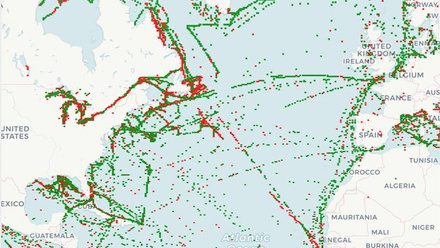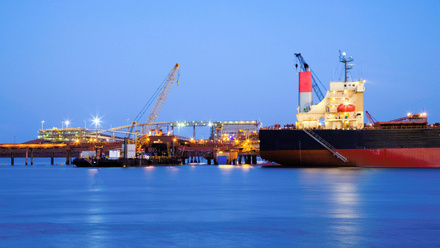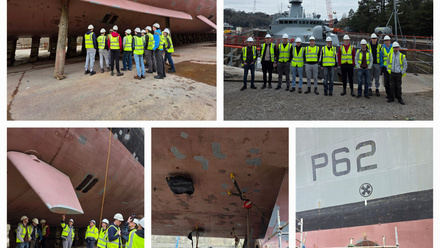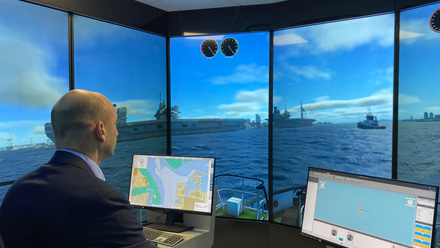History: triple screw, diesel engine containerships
Looking back at the introduction of these remarkable engineering triumphs in the 1970s.
By the early 1970s, containerisation was in full flow. Ship sizes and capacities were continually being increased while speed had settled on a standard of around 26 knots. This required considerable machine power, and the choice lay between the then current diesel engines, which were individually not powerful enough to generate the necessary output except for the newly developed super large bore units, or steam turbines.
Typical of the turbine solution were the four Trio class container ships built for Hapag-Lloyd by Blohm + Voss. These 3,000 teu (twenty-foot equivalent unit) class ships were originally twin-screw vessels, but during the 1980s all underwent refits that included conversion to single screw propulsion, retaining just one of the turbines.
The alternate diesel answer led to the building of some amazing vessels, including the East Asiatic Company’s Selandia and Jutlandia (delivered September 18 and December 28, 1972, respectively) and built by Burmeister & Wain, in Copenhagen (unsurprisingly EAC chose diesels as it was the pioneer of this type of machinery for ships having commissioned the twin diesel powered Selandia in 1912, generally considered the world’s first ocean-going motor ship).
They were operated in the ScanDutch consortium which comprised EAC together with Brostroms, Wilhelm Wilhelmsen, Nedlloyd and Compagnie Générale Maritime.
The power of triple diesels
What sets these two vessels apart (together with the ScanDutch vessels Nihon and Toyama) was that their machinery consisted of three low speed diesel engines. This consisted of a Burmeister and Wain 12-cylinder K84EF two-stroke cross head diesel on the centreline, connected to a four-blade controllable pitch (CP) propeller and rated at 30,000 bhp, with two 9-cylinder versions outboard, each of 22,5000 bhp and connected to a six blade declutchable fixed pitch propeller, for a total of 75,000 bhp.
In a 1975 Royal Institution of Naval Architects paper, E Kongsted of EAC’s newbuild department, described the development of the two vessels, noting that, on trials at full power a speed of 28.02 knots was achieved at a draught of 10.92m; at 8.40m, maximum speed was 30.52 knots. Using the centreline engine only (30,000 bhp) and at a draught of 9.0m, a speed of 20.20 knots was recorded. These speeds make the two vessels the fastest container ships until the arrival of Sealand’s SL-7 with its 33-knot speed.
In service, the wing engines were used to boost the main engine during ocean passages between Europe and the Far East, while the main engine alone was able to maintain a speed of 19 to 20 knots when operating on coastal voyages between ports.
However, in the interests of fuel economy, and following the 1973 energy crisis and increased cargo capacity demands, Selandia and Jutlandia had major modifications carried out to their propulsion plant and were lengthened by 16m. The objective was a reduction in power of some 50% from the original 75,000 bhp so as to achieve a revised service speed of approximately 20.5 knots and with a capacity up to 2,850 teu.
The 9-cylinder B & W K84EF wing engines were converted from impulse to constant pressure turbocharging, with the output held down to the original level to avoid overloading the propellers; the twelve-cylinder K84EF centreline engine was derated and now drove a new cp propeller.
The required service speed was achieved with the wing engines alone, but all three engines could be used when necessary. Resultant savings in specific fuel consumption were around 10 to 12 g/bhp-hr overall, and the payback period was said to be less than two years. The modifications included fitting new Brown Boveri VTR501 turbochargers, Defoe auxiliary blowers, IPE shut-off dampers and other IPE parts.
A new owner steps up
However, as a business EAC suffered badly during the early 1990s and eventually sold off most of its fleet to Maersk in 1993. In the same year, Selandia was purchased by the US Navy and converted into a vehicle roll on/roll off transport at Newport News Shipbuilding and Drydock Co. On completion it was assigned to the Military Sealift Command under the name USNS Gilliland.
In May 2023, Gilliland was transferred to the United States Maritime Administration (MARAD) and Ready Reserve Force (RRF), and renamed Charles L. Gilliland; it is currently maintained in a reduced operating state, ready to be activated if needed.
Similarly, Jutlandia was converted and on completion became the USNS Gordon. In April 2023 it was transferred to the RRF as the Gary I. Gordon. The vessel also remains in a reduced state.
| Length overall | 257.60m |
| Beam | 32.25m |
| Draught | 11.93m |
| Deadweight | 35,287 tonnes |
| Gross register | 49,890 tons |
| Containers | 2,272 teu |
Tell us what you think about this article by joining the discussion on IMarEST Connect.
Image: the traverse bulkhead arrangement of the Military Sealift Command's vehicle transport ship USNS Gilliland; credit: Alamy.






